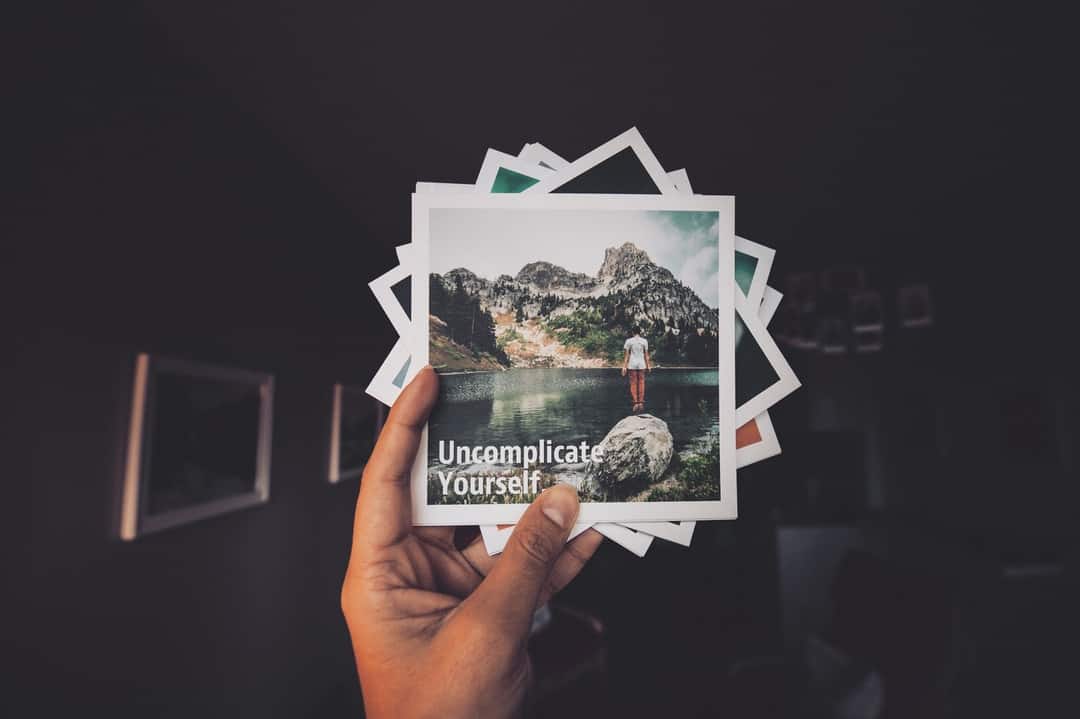Perhaps you’ve heard the term DPH or digital photo hub, but isn’t sure what it is, or why you need one? In this blog post, I break down what it is, why you need one, and why you must choose wisely! Read on, internet friend!
Hey there, photo enthusiast! Today’s topic is an important one! This post is all about one of the most important purchases you will make in your digital life – your photo hub!
What is a Digital Photo Hub?
Glad you asked! A digital photo hub is THE place where you store all your digital photos. It could be a folder on your computer, an external hard drive, or any other place where the majority of photos live. Then you use a photo management software to access that hub.
Your hub is also sometimes referred to as a Master. In other words, it’s the original. Think of recording artists, and how they have one master recording of a particular song. If you download that song, you are getting a copy, not the original. There is only one original, and everything else is derivative.
Why do I Need a Digital Photo Hub (DPH)?
Designating a digital photo hub is a must if you want to keep your photos organized, and backed up! Once you have a hub, every original goes there, and stays there, while derivates may occasionally exit out of it. Every photo you click is meant to pass through your DPH! Yes, EVERY image!

Pin This Image!
How Do I Pick The Right One?
Let’s outline what you have to look for when picking your digital photo hub:
What Makes a Hub Nice?
- It’s dedicated
- It’s intentional
- It’s accessible at all times
- It is high capacity
- It’s durable
- It’s predictable
Examples of Nice Hubs:
- Photos directory on your modern computer
- Dedicated external hard drive
What Makes a Hub Naughty?
- It’s not dedicated
- It’s not intentional
- It’s not accessible at all times
- It is not high capacity
- It’s not durable
- It’s unpredictable
Example of Naughty Hubs:
- Your phone’s internal memory
- Your 15-year-old computer
Your Hub Must Be Dedicated
Having a dedicated hub means that only your memories are stored there. Nothing else. Disorganization starts with clutter, and in digital organizing, it’s even more important to keep the clutter at bay because it’s not tangible, and therefore easy to overlook. Your photo hub should be free of anything unrelated. It should be a place where you go to look for memories only, such as an external hard drive. The photos folder on your computer is acceptable because it’s as dedicated as possible while still fulfilling all the other criteria. It’s also the most logical place to look if someone else wanted to find your photos.
Your Hub Must Be Intentional
Your digital photo hub should be a place you selected intentionally, taking all facts and criteria into consideration. It’s shouldn’t be a place that just happened. These are your memories – give it some thought, and select carefully. You’ll be glad you did. You might have ended up in the right place by accident, and if so, that’s great, but there’s nothing better than being confident about why you selected your system.
Your Hub Must Be Accessible to You at All Times
Your hub should ideally be local, and available whenever you need it. It should live where you live, and not at someone else’s place. I love cloud storage as much as the next person too, but I don’t know that I’d use as a main storage hub, at least not without syncing it somewhere local. The very simple reason is that you need to have a subscription / connection to access it, which isn’t ideal in all situations. And it’s just a best practice to make sure you can access your photos offline if you need to.
Your Hub Must Be High Capacity
Your digital photo hub should have ample storage space available, enough for your current memories as well as your future photos, and if you have a backlog waiting to be scanned, those as well. The whole point of having a digital photo hub is to have everything in one place instead of scattered around. By using one hub with enough space for everything instead of several smaller hubs that are divided, we are simplifying everything. No longer will you have to wonder which hub a photo is on – there will only be one choice. The capacity you need will depend on the types of files you have, and how many, so everyone’s needs will be a little different, but anything less than 1TB of space is generally not worth it.
Your Hub Must Be Predictable
Technology is sometimes unpredictable, so this is kind of hard criteria to meet, but I mean as predictable as possible. This is a great example of why using an online service isn’t a great option as a main hub because with some of these online services, you may not actually own your content after it’s been uploaded. Not only that, but you may actually have to pay to download your photos. You should own your photos, and not be dependent on a third party service who may or may not change their terms of service at any time. A lot of these changes can happen right under your nose, so it’s best to stay clear of them in the first place unless you are creating a back up, creating books, photo products, or are sharing copies with someone else. Case in point: As I am writing this, Shutterfly (one of the main players in the online photo storage space) does not allow you to download high-resolution copies of your photos; instead you have to select the ones you want, and pay $10/DVD to have them mailed to you. Smugmug recently changed their policy, and you can now only download one photo at a time. Can you imagine how long it will take you to download your whole collection? Ummm, no.
Tell Me: Where is your digital photo hub, and why did you pick it? What’s You Criteria? Share your comment with me below!






Marlene
March 28, 2016 at 8:21 amI purchased a 4 TB LaCie, and am using Time Machine on my Mac Book Pro, which has had to be recovered a time or two. ( I don’t fully understand Time Machine, and panicked when I thought older files were being deleted, rather than compressed, to make room for new files. So, I let three months go by, without backing up, and of course it crashed. It cost me $200 to retrieve my files.)
Somewhere along the line, I have lost my original folders in iPhoto, and THOUSANDS of files have been combined where I have to do a search to find.
Is there a software or program that will organize massive files into some sort of order for me, for instance…folders by date?
caroline@theswedishorganizer.com
March 28, 2016 at 9:58 amHi Marlene! Sorry to hear you’ve had trouble with your photos! You might want to give MYLIO a try (http://www.mylio.com). Even with their basic (free) edition, you can specify your folders and let it do the sorting for you. I would recommend letting it sort by date taken first to group all related photos together, and from there you can then sort further if you need to. Let me know how it goes!
Marlene Fredricks
March 28, 2016 at 6:29 pmThank you! I will.
Kelly
July 22, 2016 at 4:09 pmMy technically inclined husband chose a good external hard drive for us, but we’ve been lack in updating it. Photos from our cell phones go automatically to DropBox and that seemed good enough but after reading your blogs I totally see why it’s not! So happy to be getting this important project underway again with your help, Caroline! God forbid something happen to the decades of family history we have in our photos…
Caroline Guntur
July 23, 2016 at 12:44 pmTack för kommentaren, Kelly! Funneling all your digital photos from your phones into DropBox is great, as long as you create backups of the DropBox account! I know you have Mylio too, so see if you can’t sync your photos to a secondary place automatically! 😉
Missy
August 1, 2017 at 11:48 amHello! I’m trying to establish my system for photo organization. Would you recommend the Photos app on a Mac as a digital photo hub? If not, how could you use just the computer as the DPH?
Caroline Guntur
August 1, 2017 at 6:17 pmHi Missy, you could use the Photos app, but that wouldn’t be the DPH. The DPH is where the app and the photos are stored – in this case, it’s most likely your Mac, but it could also be an external hard drive depending on how you have set up the preferences. Mac Photos would only be the program you view the photos through. When I talk about a DPH, I mean the actual place where you files are stored more so than how you choose to view them. Does that make sense?
You can definitely use Mac Photos with your files, but I would caution you in that your files would be stored inside a database (as managed files) unless you change that in your preferences (you can adjust the app to just reference your files instead). The difference would be that with managed files, you’re more restricted in how you can work with them (because they’re more hidden inside the database), but with referenced files, you can look them up as individual files in your Finder, and thus work with them in many different ways – Mac Photos would just be the looking glass in that case. I tend to recommend using referenced files and having the photos stored independently of any software because it’s not uncommon that programs fade away, and when the time to export comes, it’s more difficult to transport the organizational system you put in place in the program. Oftentimes, it doesn’t transfer well at all.
In a nutshell, Yes – you can use Mac Photos, but I would encourage you to look up the difference between managed files and referenced files, so you know what you’re getting into before you put hours of work into it.
As for your computer, you can use that as a DPH without any particular program. The Finder is more than enough for some people. For more on this, read my series on Native Organizing. 🙂
Missy
August 3, 2017 at 2:02 pmCaroline, this is SO, SO HELPFUL! Thank you!
Would it be sufficient to have my DPH just as a folder under Documents on my Mac? If that is sufficient, I think that’s where I am going to store all my digitals (with a back up, of course!). I will be organizing them “chronomatically” with your suggestion of the heritage/travel/candid/etc. categories further organized by year. That completely makes sense in my mind! My “outputs” from my DPH will be archival CDs, and photo books by year. My DPH backup plan is backing up to an external hard drive, Time Machine backups, and cloud backups.
For managing my photo “workflow” for the current year, I would like to use the Photos app and organize the photos by event with coordinating albums/folders like heritage/travel/candid/etc. At the end of the year, I would make an archival CD, photo book, and then just move the albums/folders to the appropriate DPH folder. Does this make sense to you? Do you have any suggestions?
Thanks again!
Caroline Guntur
August 9, 2017 at 12:33 pmSounds like you’ve got yourself a solid plan there! Congrats! 🙂